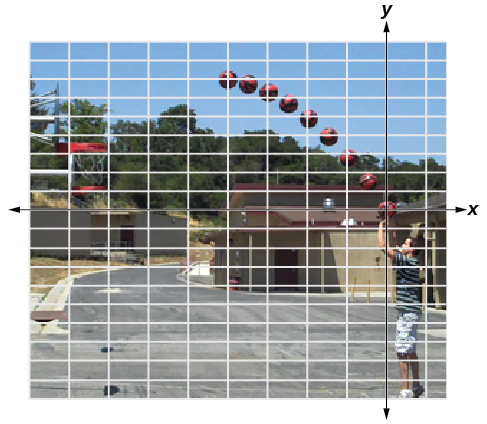| << Chapter < Page | Chapter >> Page > |
A coordinate grid has been superimposed over the quadratic path of a basketball in [link] . Find an equation for the path of the ball. Does the shooter make the basket?

The path passes through the origin and has vertex at so To make the shot, would need to be about 4 but he doesn’t make it.
Given a quadratic function in general form, find the vertex of the parabola.
Find the vertex of the quadratic function Rewrite the quadratic in standard form (vertex form).
Rewriting into standard form, the stretch factor will be the same as the in the original quadratic. First, find the horizontal coordinate of the vertex. Then find the vertical coordinate of the vertex. Substitute the values into standard form, using the from the general form.
The standard form of a quadratic function prior to writing the function then becomes the following:
Given the equation write the equation in general form and then in standard form.
in general form; in standard form
Any number can be the input value of a quadratic function. Therefore, the domain of any quadratic function is all real numbers. Because parabolas have a maximum or a minimum point, the range is restricted. Since the vertex of a parabola will be either a maximum or a minimum, the range will consist of all y -values greater than or equal to the y -coordinate at the turning point or less than or equal to the y -coordinate at the turning point, depending on whether the parabola opens up or down.
The domain of any quadratic function is all real numbers unless the context of the function presents some restrictions.
The range of a quadratic function written in general form with a positive value is or the range of a quadratic function written in general form with a negative value is or
The range of a quadratic function written in standard form with a positive value is the range of a quadratic function written in standard form with a negative value is
Given a quadratic function, find the domain and range.

Notification Switch
Would you like to follow the 'Algebra and trigonometry' conversation and receive update notifications?